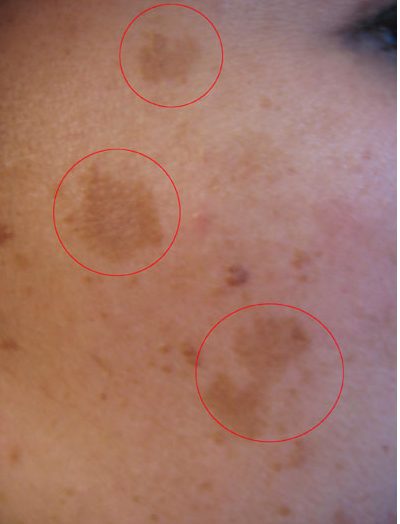
Attribution-Share Alike 3.0 Unported
Our skin is one of the dearest things for us because it’s out in the open and everyone can see it. We try to take care of it as well as we can, and we’re always looking for the best cream or treatment in order to keep our skin silky smooth. However, even if you may be aware of the latest ways in which you can help your skin stay moisturized, you are probably not aware of all the dangers that it is facing, and all the pigmentation problems that have a chance of occurring. Here, we’ll give you some insight regarding some of the things that can happen to a person’s skin, or to be more precise, their pigmentation.
Skin color comes from a substance called melanin, and the color of your skin is affected by how much of this substance you have in your body. Additionally, what happens to this substance can also dictate whether or not you suffer any pigmentation changes.
When your body produces too much melanin
When there’s too much of the stuff, your body faces the risk of developing what is referred to as melasma. Another condition is called post-inflammatory hyperpigmentation. There are several types of melasma that can occur, such as epidermal, dermal or even mixed.
Causes of melasma
There are quite a few causes for which melasma can develop in a person’s body. The most common things that lead to this condition are being pregnant and other hormone-related situations, such as consuming hormone treatments. Also, exposure to the sun also plays a part in the development of melasma, as do some types of medication.
Causes of post-inflammatory hyperpigmentation
When it comes to this pigmentation condition, several causes can be taken into consideration. Usually, it occurs as a result of a skin inflammation. The inflammation itself can be caused by multiple things, such as acne, psoriasis, eczema and even trauma.
Treating these problems
While developing these conditions can be scary, know that there are plenty of treatments that will help you recover fully. Things like using total sunblock, kojic acid or peels can take care of post-inflammatory hyperpigmentation, while melasma can be treated using hydroquinone 4%. On top of such remedies, it’s also recommended to consult a professional who can tell you more, in specifics, regarding your condition. If you visit the London Dermatology Centre, they will probably tell you which of the aforementioned treatments will work best in your situation as well. Thus it’s better to visit before getting into treatments, if possible.
Skin or pigmentation problems can be treated but they can also be very tedious and demanding, so it’s important to take action as soon as the first symptoms develop, or the first signs of something wrong start to show. This way, proper treatment can be used, and the issue can be stabilized promptly.

